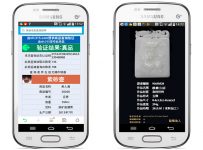
Use 2 examples to analyze how to solve the 4 special requirements of art NFC anti-counterfeiting applications
[ad_1]
At present, the NFC315 anti-counterfeiting platform has been applied to many fields such as luxury goods, artworks, and high-end goods. This article introduces the application of NFC anti-counterfeiting platform in the field of art through two actual cases.First of all, let’s look at the anti-counterfeiting of artwork and ordinary goods.special requirements.
1. Stronger individual requirements. The goods are mass-produced. The artwork is often hand-made, so the artwork is more personalized. Such as calligraphy and painting, jade carving, wood carving, antiques, etc., there are very few works of art that are exactly the same. Each piece of art can be regarded as an independent commodity. This requires that the anti-counterfeiting platform has more flexible maintenance functions for goods;
2. Higher security requirements. Compared with ordinary goods, the unit price of artworks is higher, so there is a stronger demand for anti-counterfeiting, but the demand for anti-squatting is relatively weak or not;
3. The authenticity needs to be checked multiple times, not just once. Artworks are used for collection, and commodities are used for consumption. Commodities only need to be checked for authenticity once before consumption, while artworks must be checked for authenticity many times during the process of collection and transactions;
4. The requirements for anti-counterfeiting labels are different. For ordinary commodities, the label can be pasted on the surface of the product or embedded in the interior of the product. But in order not to damage the artwork, it is generally not allowed to stick the label on the surface of the artwork. For some artworks that can be pasted on the surface, such as calligraphy and painting, etc., due to the characteristics of rice paper, the requirements for the fragility of the label are also higher.
Let’s look at how the NFC315 anti-counterfeiting platform meets these special requirements through a case.
Case 1: An art investment company in Shanghai has its own art database. It needs to add anti-counterfeiting authentication functions for all of its artworks, mainly calligraphy and painting. In the end, it can be known whether a certain artwork held by the customer is sold through the company.
We meet the needs of users through the following operations:
1. Migrate the data in the company’s artwork database to the NFC315 anti-counterfeiting platform. Users can add, delete, modify and maintain artworks on the NFC315 anti-counterfeiting platform. At the same time, the change data on the platform will be synchronized to the user’s own artwork database;
2. Provide users with NFC315 anti-counterfeiting tags, which are not ordinary NFC tags, not common tags in the market such as NXP. It is a label customized according to anti-counterfeiting requirements. This kind of label can generate a random verification code through a key, and the random verification code can be generated multiple times, but it becomes invalid after verification. This kind of anti-counterfeiting label has high security and is suitable for the anti-counterfeiting needs of artworks;
3 Provide users with label writing equipment and label writing software. The user writes the data in the anti-counterfeiting platform into the anti-counterfeiting label through the label writing software;
4. Provide users with Android application software. Users can also write anti-counterfeiting labels through their mobile phones;
5. Because the user determined that the label should be pasted on the rice paper of calligraphy and painting. Choose fragile labels suitable for rice paper (ordinary labels cannot achieve fragile effects on rice paper).

Case 2: A jade carving studio does not have its own database, but has its own domain name and website. It needs to authenticate its jade carving works. It hopes that the verification page is its own domain name, and it can jump from the verification page to the introduction page. To achieve the purpose of promotion.
We implement user needs through the following methods:
1. Open an account on the NFC315 anti-counterfeiting platform for users, and users will maintain their artworks on the anti-counterfeiting platform and set up a link for each artwork;
2. The user’s website is developed by PHP and provides users with a PHP sample program. According to the PHP sample program, the user can access the authentication service of the NFC315 anti-counterfeiting platform. The user develops the style of the verification page by himself based on the sample program. And integrate it into your own website;
3. Provide users with an Android program that writes labels. Using this program, users can write product data and their own website verification address into the label;
4. For works of art like jade carvings, labels cannot be pasted on the surface, so the NFC certification certificate in the form of a card is used. Each artwork comes with a certificate. The effect of scanning the authentication certificate on the NFC mobile phone is exactly the same as scanning the NFC tag.
From the above two cases, we can see: The NFC315 anti-counterfeiting platform can facilitate product maintenance, data import, synchronization and other operations. The NFC315 anti-counterfeiting label uses one-time dynamic verification code technology, which has high security and provides a desktop program. There are two different ways to write tags than Android programs. It is suitable for the needs of small batch and flexible writing in the art field. In addition, the user verification process is simple and no APP is required. This is also the advantage of this platform from other anti-counterfeiting platforms.
[ad_2]



